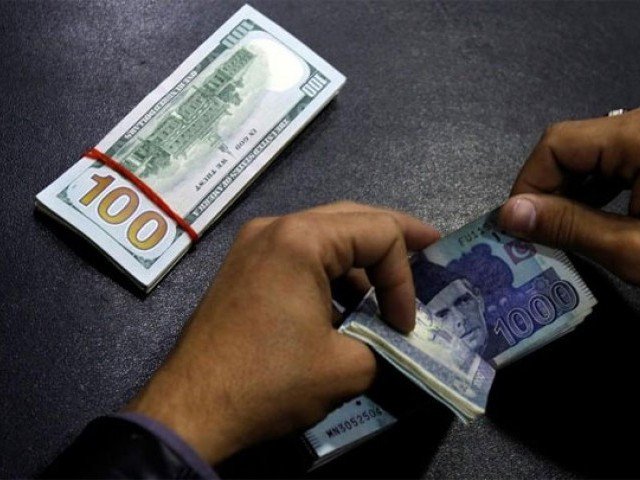
Underneath the recent wave of rupee depreciation, there lies the timeless story of politics versus economics.
Pakistan is a country with high imports and low exports. The difference is bridged through precious foreign exchange, earned from remittances, foreign direct investment and external loans. Historically, the rupee has depreciated against the dollar by approximately 7% per annum to account for the perpetual supply and demand gap.
During PML-N’s tenure, the cornerstone of Dar’s economic policy was to artificially maintain an overvalued exchange rate. It’s not that difficult to do but it’s a short-term fix and comes with a price tag. The State Bank had to pump in the hard-earned foreign exchange into the market.
What’s the downside of this policy? Well, besides depleting the forex reserves, an overvalued exchange rate makes exports expensive and imports cheaper, thus further widening the trade deficit. The industry suffers but the traders are happy. The citizens enjoy quality imported goods at cheaper prices, not realising that they would have to pay the price later on. Dar’s policy was therefore politically popular but economically disastrous.
Come 2018 and the new PTI government is sworn in. The new Finance Minister, Asad Umar, soon realised the magnitude of tough decisions that needed to be taken but was hesitant to pay the political price. The rupee did slide down but not enough to account for previous year’s depreciation build-up.
Hafeez Shaikh was brought in next. Since he was a technocrat, having no skin in politics, he was indifferent to the political costs. He immediately devalued the currency bringing it even lower than its fair value and went for aggressive monetary and fiscal tightening. The macro-economic indicators started to improve but the growth suffered. Stagflation made it worse. While economists knew that this hardship was the cost of bad economic decisions of the past, the masses did not care about economics. Pressure started mounting on the government.
Then came Covid-19. The IMF and other donors doled out special packages. Government started pumping in money and economic activity resumed. But in the meanwhile, another year had passed. The previous governments tolerated fiscal tightening in the first few years under various IMF programmes and then resorted to expansionary policies that could win them elections. The realisation started setting in, however, that owing to the unforeseen Covid-year, the PTI government would not have that luxury. Something needed to change.
Shaukat Tarin was made the new Finance Minister. The already low interest rates were further supplemented by a fiscally ambitious strategy. The PSDP for 2021-22 was set to increase by nearly 40% over the last year. The energy price increases were withheld to a great extent. It was time to put politics ahead of economics and the economy clearly responded to fiscal and monetary stimulus.
But Pakistan has enough historical evidence to suggest what would have happened next. The imports are already on the rise. A few one-off factors like vaccine imports, Afghanistan situation and the rising commodity prices are also not helping. The rupee has consequently depreciated, but exchange rate is only the first line of defence. Other policy levers now also need to respond, and economists’ prescription is clear.
The fiscal and monetary policies need to work in tandem. The interest rate needs to be adjusted upwards. (By the time this article would come to print, the new monetary policy would be out.) The PSDP spending needs to be rationalised. The gas and oil prices have to be increased further. Most importantly, the IMF programme needs to be put back on track to keep the capital inflows coming.
Some of these decisions, however, could be politically unpopular. The challenge at hand therefore is to once again strike a careful balance between politics and economy.
Published in The Express Tribune, September 21st, 2021.

